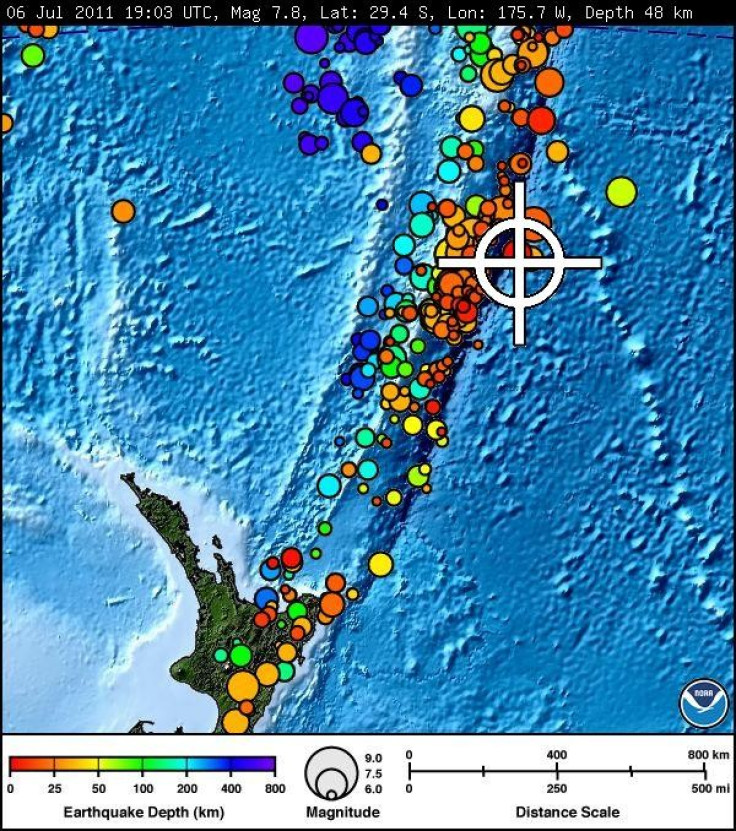New Zealand Earthquake: Tsunami Threat Over

A tsunami sparked by a powerful 7.6-magitude quake failed to materialize on New Zealand's shores, but Civil Defense says people should expect high tides within the next 24 hours.
The quake struck at 7.03am (NZT) at a depth of 20km, according to the US Geological Service. It was felt in Wellington and parts of the East Coast of the North Island.
It was originally reported to be magnitude 7.8 at a depth of 48km but USGS has revised it to magnitude 7.6.
The Pacific Tsunami Warning Centre in Honolulu said a tsunami had been generated and could be around a metre high when it arrives at New Zealand.
The USGS said tsunamis had already struck the Kermadec Islands and Raoul Island this morning. The waves were 68cm and 84cm high before adding it had issued a tsunami warning for New Zealand, affecting East Cape, North Cape, Gisborne and Auckland.
However, the Pacific Warning Centre based in Hawaii called off its tsunami warning after the 7.6 earthquake in the Kermadecs before the Civil Defence did.
Civil Defence Minister Craig Foss says the chain of command here is clear.
"The official advisory body is New Zealand Civil Defence and the messages they sent erring on the side of caution was correct as normal."
Dr Suart Weinstein from the Centre told Radio New Zealand said the warning has become too confused, and it undermines the warnings from national authorities.
"Their decisions are in effect short circuited because the public has access to our bulletins.
"It is a problem."
Dr Weinstein says the Centre may assign threat levels instead, but discussions are still taking place as to what shape those bulletins will take.
Meanwhile scientists say New Zealand was never in any danger of a large tsunami hitting its shores, as the seismic energy from a huge earthquake north of the country was directed away from here.
Tsunami scientist William Power of GNS Science said the direction of the fault rupture was north-south and most of the tsunami energy was radiated to the east and west, rather than south towards New Zealand.
The largest waves were also sent in an east and west direction, rather than south, Dr Power said.
Scientists say they realised the tsunami threat was small when a wave reached a tsunami measuring gauge anchored to the floor of the Pacific Ocean, 40 minutes after the quake occurred.
"The characteristics of the wave as measured at the (gauge) gave us a degree of confidence that only a small tsunami had been generated and New Zealand was not in its main path," Dr Power said.
It was appropriate to issue the initial tsunami warning and then downgrade it as more information came to hand, he said.
Waikato Regional Council's navigation safety team said the quake could lead to strong currents and unusual water patterns over the next few days, particularly on the east coast.
Auckland Civil Defence controller Clive Manley said they were expecting very dangerous currents.
"This is generating a lot of energy," Manley said, stressing it was a marine warning and not a land threat warning.
He said people should stay out of the water and stay away from low-lying areas, beaches, estuaries, marinas and harbours due to fast-running currents.
The warning did not however deter Takapuna residents from heading to the beach and many people were strolling along the sand, several people were heading out on kayaks and others were returning from trips on paddle boards.
© Copyright IBTimes 2024. All rights reserved.





